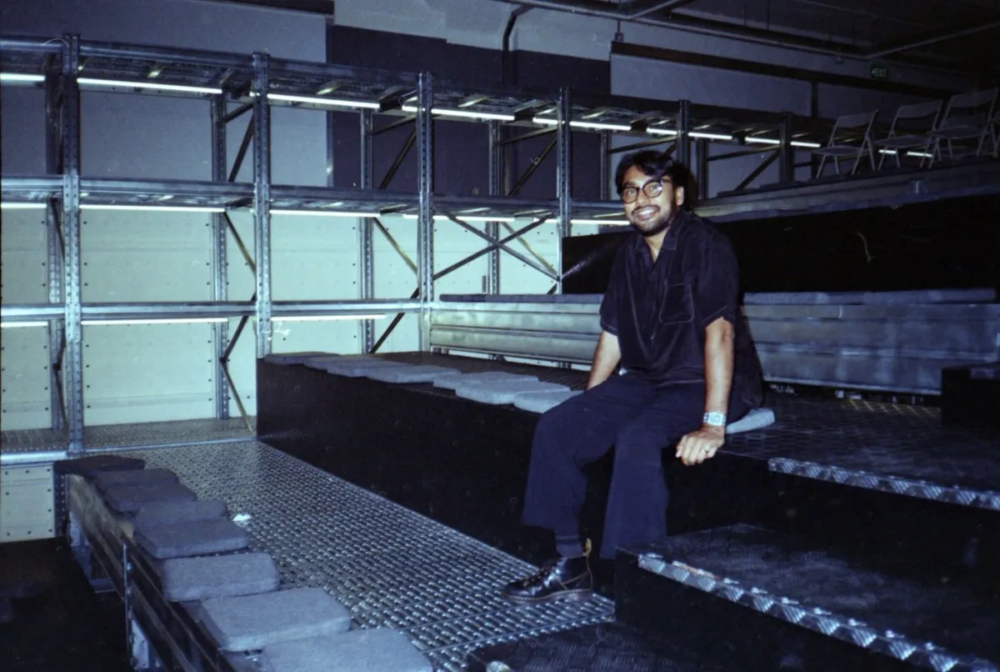
Fashion lives and dies in the pipelines of consumerism
Otto von Busch: «what if fashion is just a byproduct of something else? What if fashion is just the exhaust of social processes? What if fashion is just the exhaust of globalization we all now cough from?»
The realm of fashion
For people seduced by the realm of fashion, it is easy to think of fashionable garments and accessories as a fundamental cultural expression of our time. The glamourous catwalks, the expensive flagship stores, the glossy media, and the flourishing university programs all point out how fashion, from rebellious street styles to exclusive couture, has become a pillar of the Arts. With a recurring presence in the palaces and museums, fashion is no longer at the fringe of the artistic achievements of culture but an accepted sibling at the table of cultivated values. We thus take it for granted that fashion, even if stricken by vanity and entrenched in questionable transactions, has some essential value to our time. Like fine art, with its fairs and exhibitions, it takes place under the reign of capitalism but is still more than the sums of money paid for it.
What if fashion is just the exhaust of social processes?
But what if we look at the wrong thing? What if fashion as we know it is not the cultural figurehead we think it is? That is, just as we may mistake the mirror image of the moon on the surface of a pond, what if fashion is just a byproduct of something else? Or, let’s put it differently. The combustion engine creates motion, and that is its function. But it also produces a lot of noise, heat, and exhaust. The dynamics of the motor burn fuel, and the excess elements we consider pollution. Similarly, what if fashion is just the exhaust of social processes? What if the social dynamics of our time create social motion, but fashion is just the exhaust of globalization we all now cough from?
Fashion is pollution
Thinking of fashion as the exhaust of pollution makes sense in many ways. Fashion is essentially pollution that, for a very short while, lives in our wardrobes and on our bodies. Most of its life is being processed, shipped, and discarded along supply chains, fueling the motion dynamics of the global fashion system. Fashion is born and dies in the moving parts of supply chains and the pipelines of consumerism. Like in a motor, fuel is pumped around the globe in long pipes to ‘live’ for an extremely short explosion in the combustion engine cylinder, while the exhaust stays around until the wind disperses it. Perhaps we should think of fashion as a similar type of byproduct. Fashion is pollution, an unnecessary exhaust from sore and unjust social dynamics, and like other poisons and contaminants, its effects vastly outlive the painkiller’s temporary anesthesia of ephemeral motility.
synthetic fibers in the fashion industry are made from oil
There is a material grounding to this perspective, as the fibers of many garments emerge from deep time to suddenly burst into flames in an instant. Like the gasoline burned in the combustion engine, the synthetic fibers that make up most items of the fashion industry are made from oil. This energy source, made from ancient, decomposed, and compressed photosynthesis, has laid long dormant under the hard crust of the earth to now be shipped around the planet to be burned by our passions for motion and speed. Take a step back and look at the long chain of events; sunlight, solar exhaust from the nuclear fission inside the sun, once reached our planet and was transformed through photosynthesis into organic matter millions of years ago, then that greenery turned into compost, and got buried deep underground, which turned it into oil, which we later pumped up and turned into plastic fibers. These we spun into thread and sewed into garments, shipped and stored and bought and brought home, and very shortly wear these garments in the sunbeams again, where the synthetic fibers can meet their origin before they are burned to become exhaust once again.
Fashion must be more than waste
To tackle its adverse effects, fashion needs to minimize its pollution. This means it must diminish its contamination footprint on the planet and all social processes. This also affects the supply chains, as these must substitute the processing of pollution to allocate more essential qualities to life instead. Fashion must be more than waste that we briefly shroud our bodies in. We must imagine that the pipelines and supply chains of the fashion industry can be filled with other content than waste and pollution.
Degrowth
From this perspective, it still makes sense that the question of ‘degrowth’ has seeped into many discussions on fashion these days. The term appears at conferences and in magazines, and even the industry sets out to position itself with this provocative idea. Yet, it is a hard nut to crack for an industry where profit and pollution are intimately intertwined, if not the same. But if we think of fashion as mere exhaust, degrowth does make sense, as the idea is to support motility and social dynamics but diminish the refuse of the process.
Make someone else pay for your growth
Yet, economically, if pollution means profit, degrowth takes some new thinking patterns. Across the economy, growth is the primary and unquestioned formula for success. You buy cheap and sell at a higher price. The difference is the abundance (or profit). You keep growing and subtract the costs, or better, externalize them: make someone else pay for your growth. The planet foots the bill for a higher human population and greater human longevity; there are just so many more moments to dress up, so much more motility needed, and so much oil to process and burn! And we live in a culture where motion, speed, and noise are real thrills.
Using surplus to put band-aids on the problems
So how does the fashion industry usually tackle pollution? If things turn messy and controversial, use a little of the surplus to put band-aids on the problems: a little clean-up here, a minuscule pay raise there, and some noise reduction on the protests and media. As long as you keep the supply lines unclogged and increase sales, you can satisfy more people. So, keep expanding, provide more dressed moments out there, and keep the motor running. It’s basic math; the graphs must point upwards, like a rocket taking off. In the end, it’s obvious. All of us know a rocket going down is no pretty sight.
Fashion is abundance, an explosion of social dynamics
But the phenomenon of fashion (as we know it) fits awkwardly with the connotations of degrowth. Fashion is, per definition, a form of abundance, an explosion of social dynamics. As consumers, we encounter fashion as the golden lining or sugar-coating offered to loyal followers. And with globalized, cheap, and reliable supply chains pumping out on-trend commodities and constant new co-labs and drops, it is hard for us even to imagine a type of fashion industry that does not base its existence on spitting out and burning off new stuff. New collections and drops are like the dotted lines on the highway, showing us that we are moving forward at speed. What would be in the shop windows if not new stuff? Why would I scroll down on the screen if the same image waited for me repeatedly? What would fashion students do if not making new collections?
What would degrowth even look like for fashion?
Yes, we can imagine a degrowth in the sense of less extraction and pollution, less pressure in the flow of goods, and a downscaling towards a more local circulation of goods and services. But the economy still needs abundance to pay for investments, innovation, and education. The principal economic formulas that deliver human welfare are based on growth, and the growing fashion industry may be the heroic figurehead of this force of development—so many parties, so many moments, so many selfies to dress up for.
The fundamental question is; can fashion work with any program that implies a constriction of its supply chains that serve our addiction to convenience, comfort, and the continuous cycles of new stuff, new looks, and new moments? What would degrowth even look like for fashion?
What if there is nothing to be constricted?
But let’s take a step back for a while. What if our perspectives are distorted and our thinking flawed in the first place? What if we count the wrong things? Perhaps we should not take for granted that fashion is a system of abundance in the first place. Except for pollution, what if there is nothing to be constricted? Turn things upside down here for a minute and look again at the supply chains and do not focus on what there is too much of, but what there is too little of.
The fashion industry defines fashion as a commodity
Like in the economy, the issue boils down to what we make measurable. In fashion, we take for granted that we count new designs, patterns, materials, items of dress, units in circulation, hours of work, tons of waste, etc. And these great numbers all supply a few moments of use. The fashion industry defines fashion as a commodity to reach the moments of use. Thus, growth means more stuff and more pollution. From the industry perspective, degrowth means less stuff, less pollution, and, if no magic is involved, most probably also less profit. Fewer commodities in the supply chains may help us tackle pollution, environmental disaster, and mass extinction, but it squares uncomfortably with the chase for increased abundance and profits.
The exhaust and pollution need degrowth, but other parts need growth
So, let’s take a conceptual jump and reexamine fashion from the opposite side. Let’s see: what if all this perceived abundance of fashion is just an abundance of pollution? What if the supply chains are suffering from an absence? Instead of seeing them full of stuff, we see a vacuum. So, turning things around, what if we reexamine the fashion supply chains from a perspective of scarcity – a lack, a hunger, or a void?
So, again, look at the fantastic network of global supply chains, now lacking essential content (even if people still cough from the toxic exhaust in there). Now start filling the pipes with something else to process. But instead of stuffing the supply chains with pollution, what should these chains attend to instead of moving around increasing amounts of stuff? We may even need to increase the pressure in the flow more rather than decrease it. That is, the exhaust and pollution need degrowth, but other parts need growth.
challenging the culture of disposability
First and foremost, fashion needs to challenge the culture of disposability, based on the exhaustion of disposable goods, materials, environments, species, lives, and moments. The supply lines need to be filled with what we retain and repair, what cultivates our shared sense of worth, that relationships are precious, fragile, and in need of protection.
A void of self-authorship in the supply chains of fashion
Second, there is a void of self-authorship in the supply chains of fashion. Fashion needs growth in consumer agency. We need to figure out how to better provide a sense of control amongst participants. Can we imagine a fashion system not based on leaders versus followers, influencers versus those with no influence? Perhaps this is again antithetical to what we consider fashion to be, but if not so, how do we work towards such rearrangement, and how do we educate with such a goal in mind?
A scarcity of justice in the fashion supply chains
Third, there is a scarcity of justice in the fashion supply chains. As has been blatantly apparent, the current supply chains extract and expropriate resources, values, and profits, draining workers and natural resources while pushing out pollution and furthering injustices. We need supply chains to provide more just distribution of rewards, inclusion, and control in decision-making, and counting of externalized costs, environmentally, socially, and psychologically.
A lack of meaning in fashion
Fourth, fashion supply chains suffer from a lack of meaning. If we think fashion really has value and meaning for people, the supply lines that go from design studios, fields, and factories all the way into the soul of consumers, the content of these supply lines needs to be something more than exhaust and pollution.
If fashion is to be truly meaningful, it needs to support and facilitate a way of life together with garments that is not merely an ephemeral commodity exchanged for only skin-deep identity affirmation.
Thus must at least mean not letting fashion merely be defined by the industry or as images on identity-media-platforms. Designers must help find ways to deepen fashion practice beyond a temporary dressing over the raw and bleeding wound of pervasive cultural despair.
Help us imagine how we can rethink supply chains from siphoning the pollution from the habits of our civilization’s overwhelming hopelessness to instead supporting the growth of agency, justice, and meaning. That life, deep down and for all living things, is actually worth something. That we are more than exhausted.
Otto von Busch
Designer and professor of Integrated Design at Parsons School of Design. In his work, he explores how the powers of fashion can be bent to achieve a positive personal and social condition with which the Everyperson is free to grow to their full potential. Von Busch lives and works in New York







